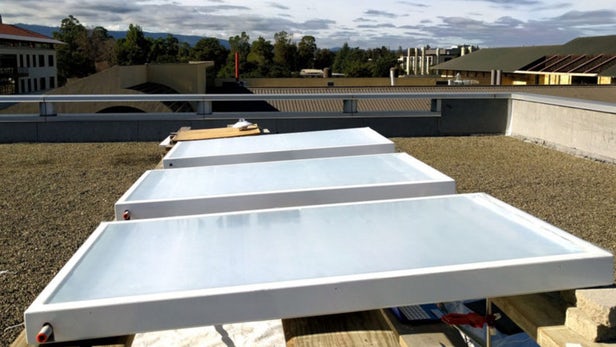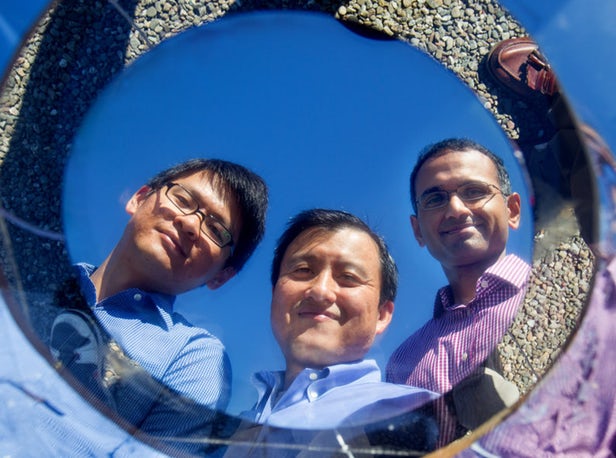Electricity-free Stanford system cuts cooling costs by beaming heat into space

Radiative sky cooling systems use reflective panels to emit heat into space, potentially cooling a building in the process(Credit: Aaswath Raman)
Heat naturally flows from hot things to cold things, and since there are few places colder than the vacuum of space, that's a great place to try to beam excess heat. Over the last few years a Stanford team has been developing a roof-mounted system that can cool a building by doing just that, and the latest test of the technology has managed to use solar panel-like devices to cool water without requiring any other energy source.
The Stanford system, which its developers call radiative sky cooling, first arose in 2013 as a step towards eventually cooling homes and buildings without using any external power source. The system would draw thermal radiation out of the building and emit it into the sky at a wavelength that allows it to easily pass through the Earth's atmosphere and escape straight out into space. To negate the incoming thermal energy from the Sun, the panel is coated in a multilayer optical film, which reflects 97 percent of the sunlight that hits it, allowing the system to still function on a hot, sunny day.
"If you have something that is very cold – like space – and you can dissipate heat into it, then you can do cooling without any electricity or work," says Shanhui Fan, senior author of the study. "The heat just flows. For this reason, the amount of heat flow off the Earth that goes to the universe is enormous."
Those initial proof-of-concept tests were done using wafers of the material about 8 in (20 cm) wide, but they only demonstrated how the surface itself stayed cool. After that, the team put the material to work as a coating for solar panels, keeping them cool to increase their efficiency.
Now, the Stanford scientists have scaled up the
system and shown it could be a practical way to chill running
water, which could then be piped through a building to cool it.
In the most recent tests, the team placed up to four panels of
the reflective material measuring 2 sq ft (0.2 sq m) on a
rooftop, with water flowing quickly through pipes underneath
them. Over three days, the panels were able to consistently cool
the water 3° to 5° C (5° to 9° F) lower than the ambient air.

Using the data gathered through those tests, the researchers simulated how well these panels would fare in cooling a two-story office building in the hot, arid climate of Las Vegas. In these tests, the building was cooled by a vapor-compression system, and that system's condenser was in turn cooled by the new panels. Sure enough, they found that throughout the summer the panels cut the power needed to cool the building by more than 20 percent, a saving of about 14.3 MWh of electricity. Day-to-day, the savings varied between 18 percent right up to 50 percent.
"This research builds on our previous work with radiative sky cooling but takes it to the next level," says Aaswath Raman, co-lead author of the study. "It provides for the first time a high-fidelity technology demonstration of how you can use radiative sky cooling to passively cool a fluid and, in doing so, connect it with cooling systems to save electricity."
To continue developing the devices, the researchers have founded a company called SkyCool Systems, and they're currently working to integrate the panels into air conditioning and refrigeration systems. One of the main applications they're targeting in the long run is the mammoth task of cooling data centers.
The research was published in the journal Nature Energy.
